In London, a Manifesto of Chanel’s Enduring Legacy
On a cold and rainy December day, I entered London’s Victoria & Albert Museum for the museum’s latest fashion showcase — Gabrielle Chanel. Fashion Manifesto. Even though the show has been running since September, and goes until 25 February, the entrance was filled with members waiting for a glance inside Gabrielle Chanel’s creative genius.
As I descended the stairs into the depths of the show, curatorial details shined, evidence of the care put in by the exhibitions collaborators, Palais Galliera, Fashion Museum of the City of Paris, and Paris Musées. The staircase was wrapped in glossy black, reminiscent of Chanel beauty products, while pops of red created the feeling of being surrounded by a rouge lipstick.
Arranged in chronological order, one enters the exhibition faced with the Marinière Blouse from Spring/Summer 1916, one of the oldest surviving Chanel garments. Surrounding the fragile piece is text describing the chronology of Gabrielle Chanel’s creative pursuits, including famous garments, celebrity moments, and the evolution of Chanel’s global expansion. This introduction to Chanel’s early days as a milliner created the foundation to understand the evolution of Chanel’s creative genius as the brand grew from its humble Paris origins.
The next section, titled Emergence of a Style, solidifies this foundation. Honing in on Chanel’s growth during the 1920s and 30s, the sections identify the various inspirations Chanel drew from, including menswear and tweed, to cement her signature haute couture style. Examining Chanel textiles, distinct white and black color palettes, and Chanel’s unique connection to British fabric artisans, the rooms center Chanel’s fashion milieu while constructing an ecosystem of inspiration and collaboration throughout Europe, all available to Chanel throughout these formative years.


Taking a break from fabrics and haute couture, the viewer is guided through a room in the shape of Chanel’s iconic N°5 fragrance. Highlighting the process of creating the signature fragrance, in addition to Chanel’s beauty line, the curators display archival pieces documenting the arduous development Chanel and her team went through to create the world’s best-selling perfume.
The exhibition gives special attention to the impact of World War II on Gabrielle Chanel’s personal and professional life. Often critiqued for her ties to German intelligence during the time, the show includes special nuance on Chanel’s complex standing during the war. A somber reflection of the accountability followers of Chanel often call for, these rooms emphasize this cloudy part of Chanel’s journey. The war is situated within Chanel’s perceived retirement from fashion — this retirement didn’t last long, however. In 1954 Gabrielle Chanel, aged 71, cast off her retirement and unveiled a new collection, manipulating and experimenting with the forms she perfected in the 1920s and 30s. Defying the proportions, colors, and silhouettes that came to define Chanel until the war, this new direction most clearly created the Chanel we know and love today.
To explore this direction, the exhibition’s next room is aptly called The Suit. Featuring over fifty suit ensembles across two stacked levels, the jaw-dropping display towers over viewers as they look up at the intricate beauty of the signature Chanel suit. In a range of colors, from off-white and black to hot pink and green, and in signature Chanel tweed and silk, the collection is mirrored by a short film describing the fashion staple. The next room catalyzes this energy, showcasing rows of eveningwear pieces and suits. Building on black and luminescent gold colors, the cocktail and evening suits showcase the pinnacle of Chanel’s craftsmanship: intricate embroidery, textured weaves, and patterned silks make each piece jump out of its glass case, mesmerizing the viewers with its beauty.

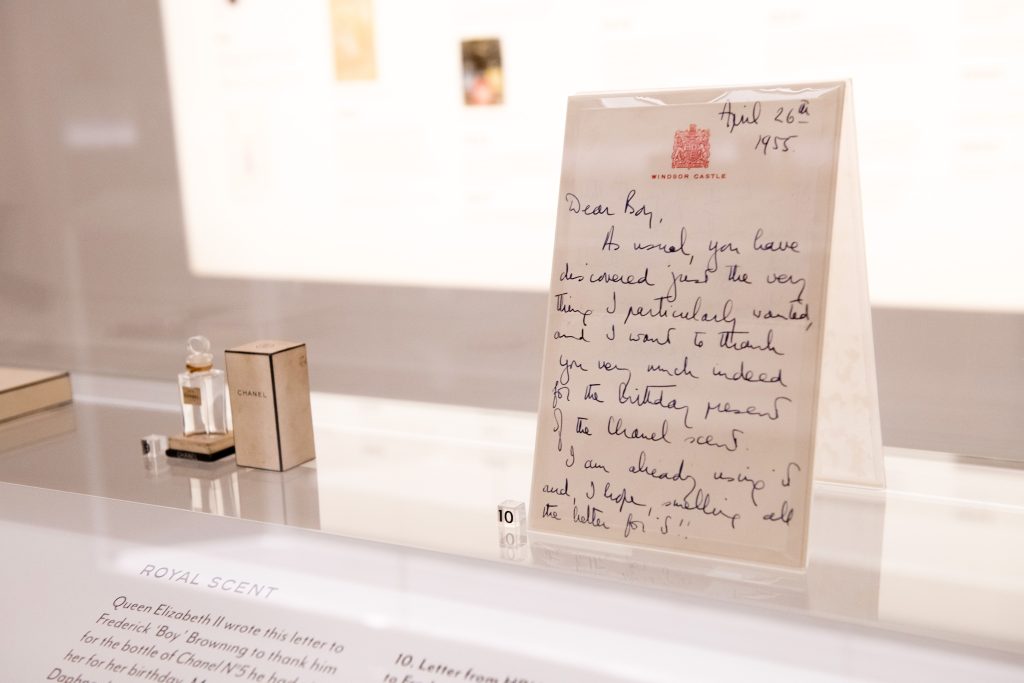
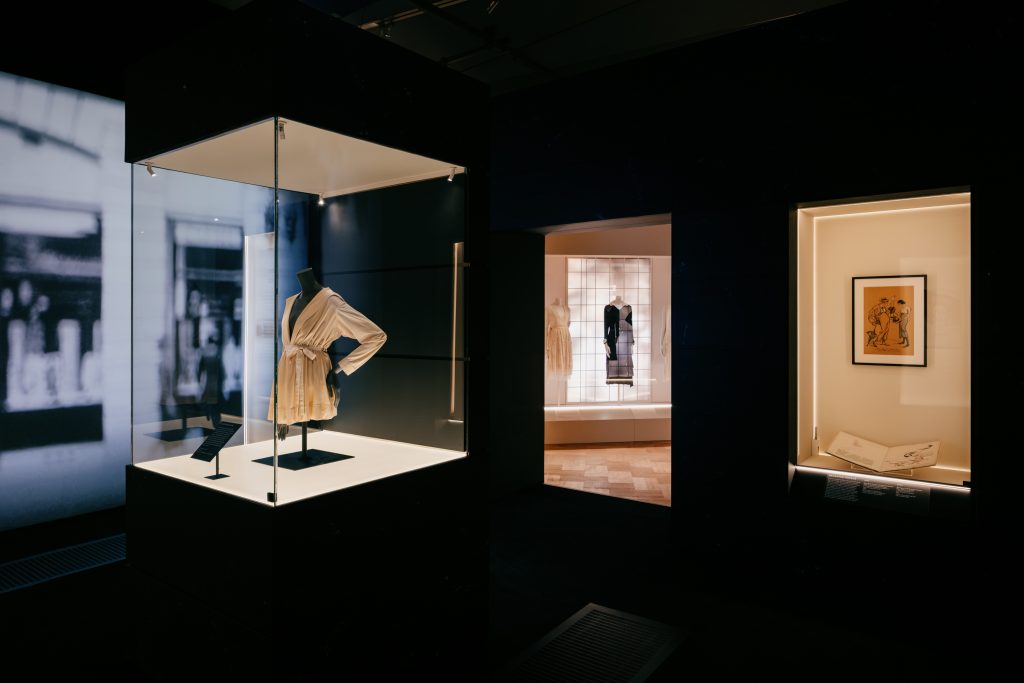
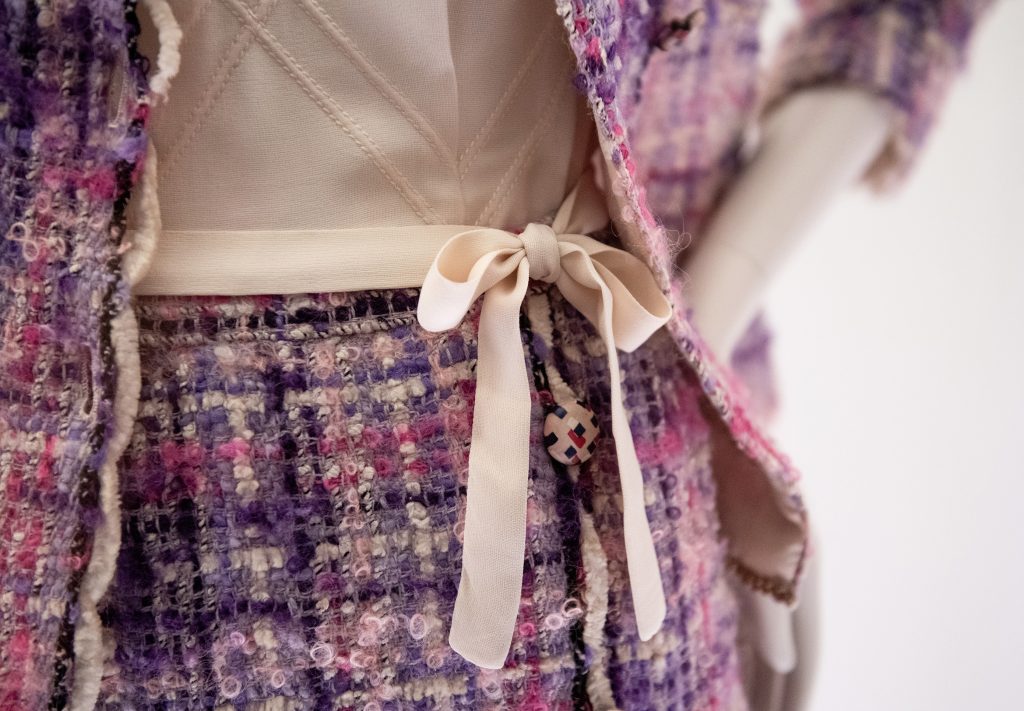
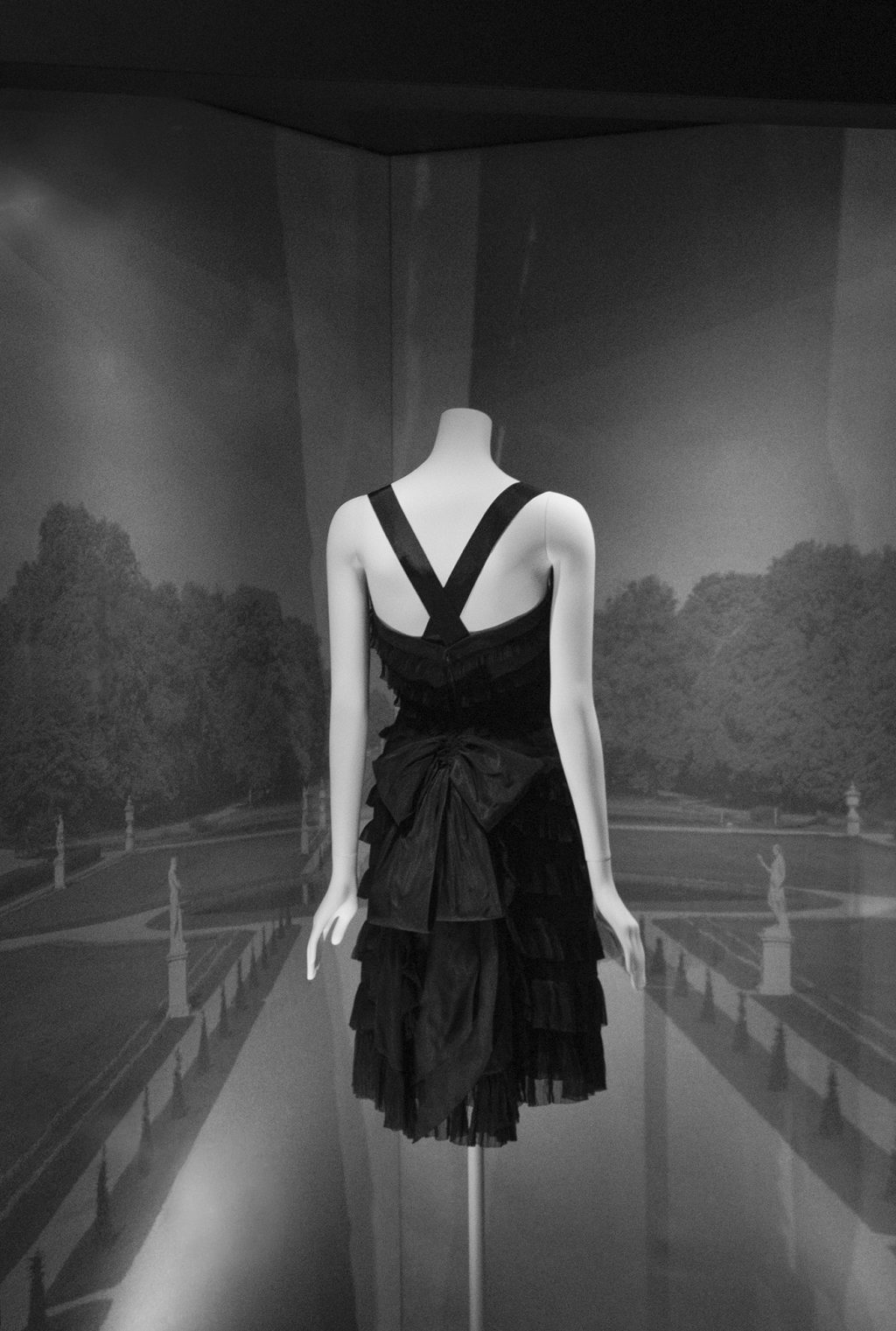
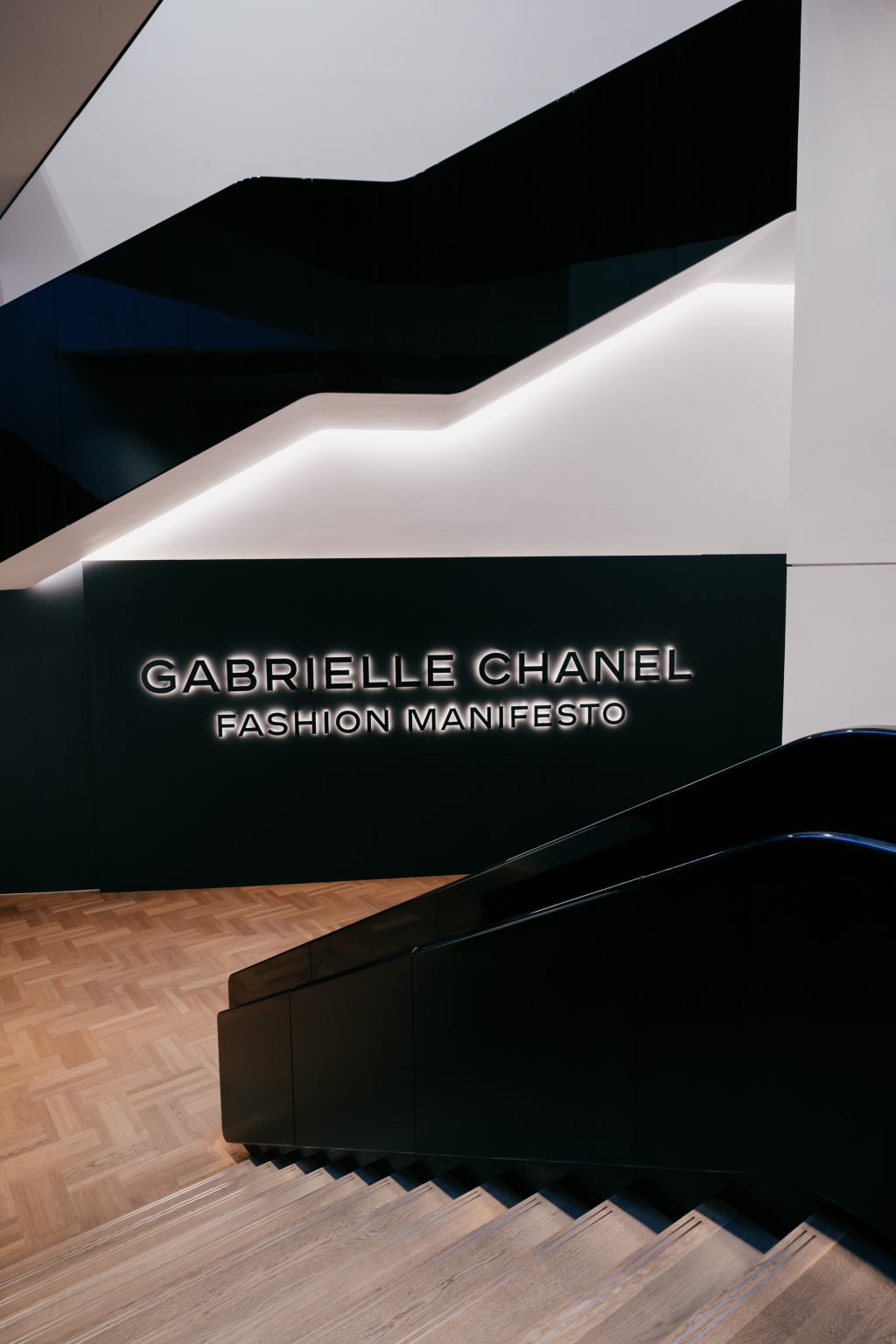
The rest of the exhibition immerses one in the depth and breadth of Chanel’s accessories. The key to finishing any Chanel look, the show traces the evolution of iconic Chanel bags and jewels. Chanel’s commitment to elevating costume jewelry to luxury status is evident throughout the space: the most amazing ensembles of multi-colored jewels and mixed metals contort in delicate floral shapes, gold-heavy belts and necklaces, and statement chokers. These pieces surprisingly weren’t limited to Gabrielle Chanel’s later experimentation after the war: daring costume jewelry emerged as early as the mid-1930s, yet another piece reifying Chanel’s inventive flair.
As the exhibition winds down, the final room once again takes my breath in its grandiose beauty. Numerous dresses and suits are placed on a mirrored staircase – a recreation of the staircase in Chanel’s atelier – and are surrounded by pieces from Gabrielle Chanel’s final collection, Spring Summer 1971. Ending with Chanel’s final collection draws the emotional and artistic experience of the exhibition to a full-circle close: it defines Chanel as a daring woman, not scared to continuously define and redefine her quintessential style, eye, and process.
As the first UK exhibition dedicated to the work of Gabrielle Chanel, the show imbues emotion-filled understanding into the styles architecting Chanel’s iconic image, an image that has persevered for over 100 years. Painting a much deeper picture of the artisanal breadth of Chanel’s legacy, a legacy built upon most notably by Karl Lagerfeld, the exhibition beautifully bends time – some of Chanel’s earliest pieces are nearly identical to their modern-day counterparts. The Chanel suits of the 1950s and 60s mirror the tweed suits marching down the runway today, a true manifesto of Gabrielle Chanel’s enduring iconic status. Guiding the viewer through nearly 60 years of Gabrielle Chanel’s artistic oeuvre, the exhibition ensures everyone steps away with a deeper understanding of Chanel’s genetics and the immense creative energy emanating from the House of Chanel.